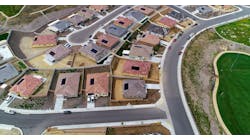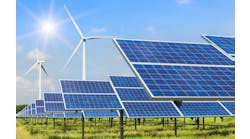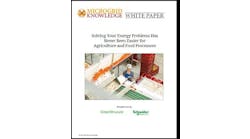Building the Business Case for Resilience
Joe Williams, distributed energy resources product manager at Eaton shares insights on how to gain approval for microgrid projects by building the business case for resilience.
Extreme weather events are affecting millions of people with increasing frequency. The National Climate Assessment reports the number of heat waves, heavy downpours and major hurricanes has increased in the US over the last two decades, while the strength of these events has also risen. The impacts of natural disasters make it clear that the climate challenges we face are real. More than ever, our global energy and infrastructure must be able to withstand extreme conditions. Our lives, communities and businesses depend on it.
Microgrids are progressively being used to keep the power on and processes running, even in the face of extreme weather. Gaining approval for a microgrid project, however, can be a complex task. From my perspective, there are three key challenges: building the business case for resilience, managing utility interconnection and determining how to finance the project. I will cover the latter two topics in upcoming articles, but let’s first examine resilience.
Defining resilience
Resilience is the capacity for homes, communities, businesses and institutions to recover quickly. It’s a measure of toughness fashioned from preparation — it’s the ability to respond to change with adaptability, elasticity and speed. And it requires that we prepare for the unexpected, especially as unusual conditions become more common.
Simply put, resilience is the “ability to prepare for and adapt to changing conditions and withstand and recover rapidly from disruptions,” according to Presidential Policy Directive 21 (PPD-21). It does not matter if the disruptions come from deliberate attacks, accidents or natural disasters.
Importantly, resilience and reliability are not the same thing. Reliability is the expected result, while resilience is the ability to achieve it.
How much resilience do you need?
According to Climate Central, over the last 20 years, large-scale power outages increased by 67% and they continue to impact millions of communities and businesses. How do you quantify the value of building an energy infrastructure that is able to withstand extreme weather conditions?
Establishing the value of resilience requires quantifying both the cost of power disruptions and the probability of them occurring. The cost of a power disruption can be measured by its community impact, lost revenue and expenses, along with increased greenhouse gas emissions. To establish a baseline for the likelihood, duration and anticipated impact of power outages, you need to factor in the local environment and impact of extreme weather events, aging energy infrastructure and changing energy habits that could cause power disruptions.
Bottom line, without a crystal ball, it’s difficult to know what challenges the future may bring. But through our experience deploying microgrid systems for the better part of 20 years, you can build a business case for resilience by focusing on the energy savings and sustainability boost resilient infrastructure enables.
Addressing resilience with an Everything as a Grid approach
At Eaton, we’ve taken an Everything as a Grid approach to the energy transition that increases and optimizes the energy the world relies on. In Puerto Rico, we’re applying this approach by developing a microgrid in collaboration with Enel X at our Arecibo plant, where we manufacture circuit breakers used in homes, buildings and industrial applications.
In 2017, the island took a one-two punch from Hurricanes Irma and Maria. Together, they knocked out 80% of the island’s electrical transmission poles and lines — causing nearly 3.4 billion hours of lost electricity. As the island began to modernize its energy infrastructure to mitigate the impact of future extreme weather events, the governor signed a mandate approving an integrated resource plan that called for:
- About 3,500 MW of solar capacity and 1,500 MW of storage by 2025.
- Implementation of local generation for homes and buildings.
- 100% renewables by 2050.
Microgrid systems will be essential, as they help prepare for the unexpected by balancing where, when and how electricity is consumed.
To enable resilience in Puerto Rico, Eaton launched an initial project at our Arecibo manufacturing plant to power through a grid outage by using energy generated on-site. The microgrid system at the plant includes 5 MW of solar PV, 1.1 MW of battery storage plus existing diesel generators.
The project will provide more sustainable and resilient power while supporting our enterprisewide goal of carbon neutrality in global operations by 2030. Here’s how:
- Reduced greenhouse gas emissions by more than 4,500 metric tons, equivalent to the carbon sequestered by approximately 5,400 acres of forests in the US each year.
- Reduced electricity costs by an estimated 7% to 10% (totaling nearly $5.6M in energy savings over a 20-year period) with local power generation.
- Increased sustainable energy production enabled by intelligent microgrid controls, even when the local grid is offline.
While the impact of microgrids has been proven for years, there are challenges to justifying the technology investment. And one of the biggest issues is defining resilience. Our microgrid project in Puerto Rico highlights how the technology works for commercial and industrial applications — enabling resilience while advancing sustainability and strengthening regional infrastructure. Next up, look for our take on how to navigate the utility interconnection and financing hurdles of microgrid investment.
Joe Williams is the distributed energy resources product manager at Eaton. At the Eaton Experience Center in Pittsburgh, Pennsylvania, a full-scale demonstration and testing facility, you can take a hands-on look at how microgrids support resilience and sustainability while reducing energy costs. The controlled environment features a fully functioning interactive microgrid that interconnects multiple on-site sources — including solar, energy storage, generation and utility supply. Our goal is to help take the mystery out of electrical systems and demonstrate how energy infrastructure can support resilience and sustainability, while reducing costs. Learn more and schedule a tour.








